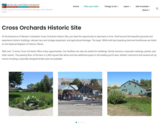O presente livro é resultado do mestrado profissional do Programa de pós-graduação em Rede Nacional para Ensino das Ciências Ambientais (PROFCIAMB) da Universidade Federal do Pará. A pesquisa foi desenvolvida através de um curso de capacitação sobre a importância ambiental e socioeconômica dos sistemas de produção de cacau ofertado aos alunos do curso técnico em agropecuária da Escola Comunitária Casa Familiar Rural de Uruará – CFRU. Durante esse curso, notou-se a dificuldade dos alunos em buscar informações sobre a cacauicultura e as principais árvores que são utilizadas como sombreamento e a relevância desse sistema produtivo. O livro tem como público alvo os alunos do curso técnico em agropecuária das Escolas Casa Familiar Rural – CFRs, professores, profissionais de extensão rural e produtores rurais.
O primeiro capítulo trata do conhecimento sobre as principais práticas de manejo nas lavouras cacaueiras. Para fundamentá-lo, foram utilizadas publicações de autores vinculados a Comissão Executiva de Planejamento da Lavoura Cacaueira – CEPLAC, que pesquisam sobre a cacauicultura há mais de 50 anos no Brasil.
Durante o curso de capacitação, foi realizado um levantamento das principais espécies que são utilizadas pelos produtores do município de Uruará como sombreamento das lavouras de cacau. Além disso, houve um questionamento aos produtores sobre a importância ambiental e socioeconômica das espécies plantadas. Foi realizada a identificação das espécies encontradas e as 20 mais abundantes foram selecionadas para compor o capítulo 2 desse livro.
O segundo capítulo apresenta 20 espécies florestais nativas da Amazônia para compor o sistema de produção de cacau, tendo como principal função o sombreamento. Além disso, informações são fornecidas para que os produtores possam complementar a renda da família com a venda de produtos como: frutos, sementes, óleos e madeira. Além disso, para aumentar a produção, informações como diversificar as
espécies no sistema de produção de cacau, trazer recursos para a propriedade como madeira para construção civil e rural na propriedade, alimento para a família e animais de criação, e uso de plantas medicinais são fornecidos. Em vista para proteger, conservar e aumentar a abundância das espécies nativas que são utilizadas no sombreamento do cacau, informações sobre risco de extinção e função ecológica também foi fornecida.
O livro possui função didática e pode ser utilizado nos cursos voltados à agricultura e produção cacaueira. Também servem de apoio e conhecimento para professores, profissionais na área de agropecuária e produtores de cacau que busquem ampliar seus conhecimentos.

